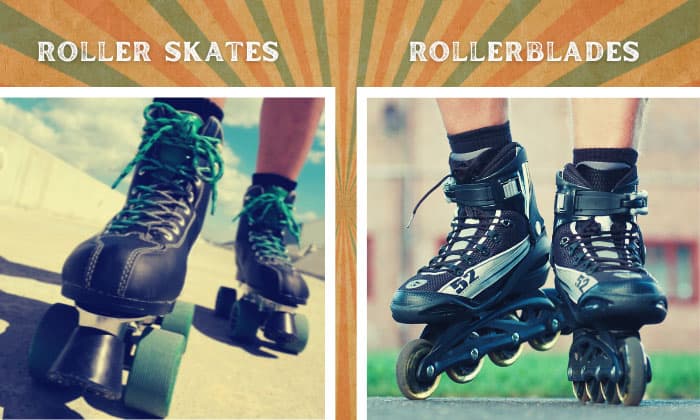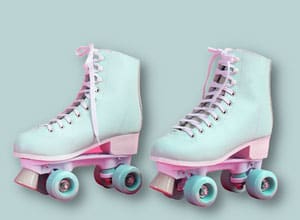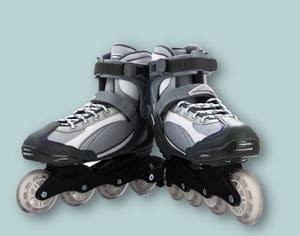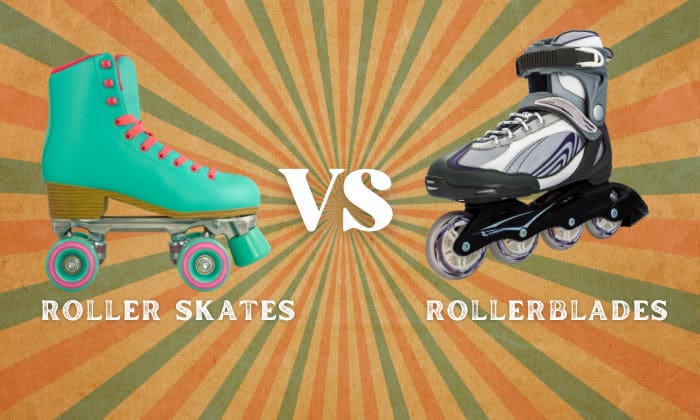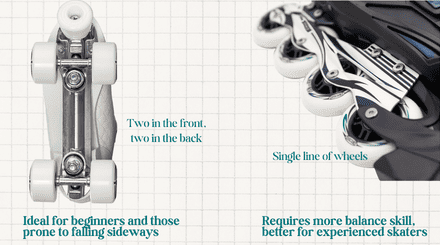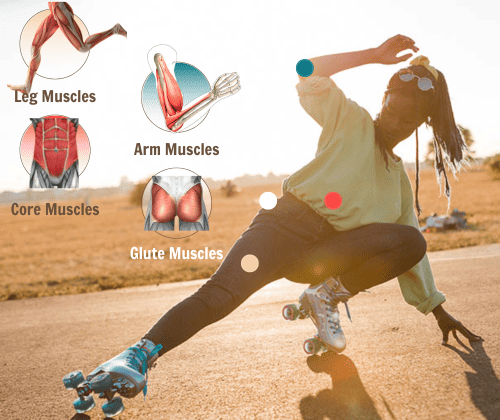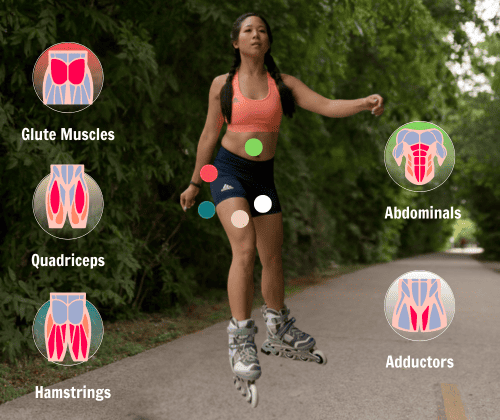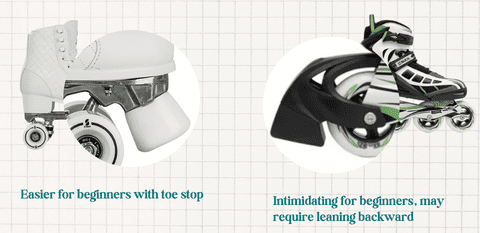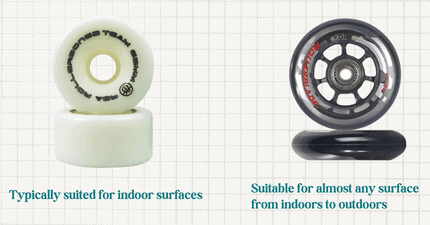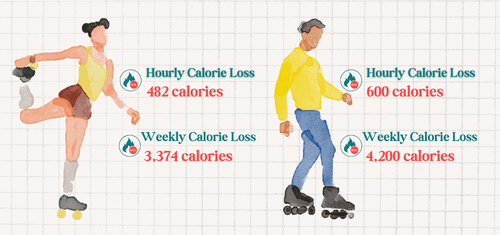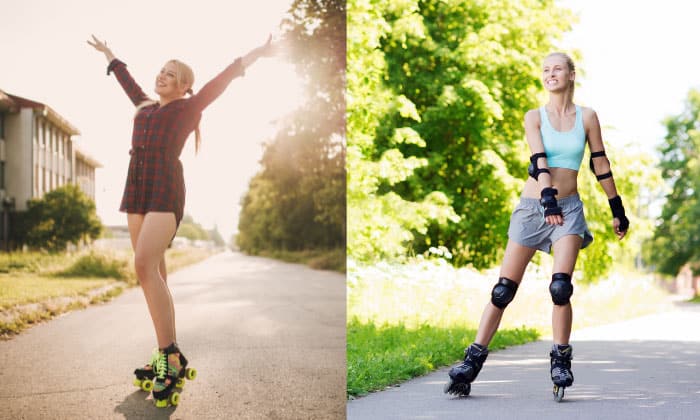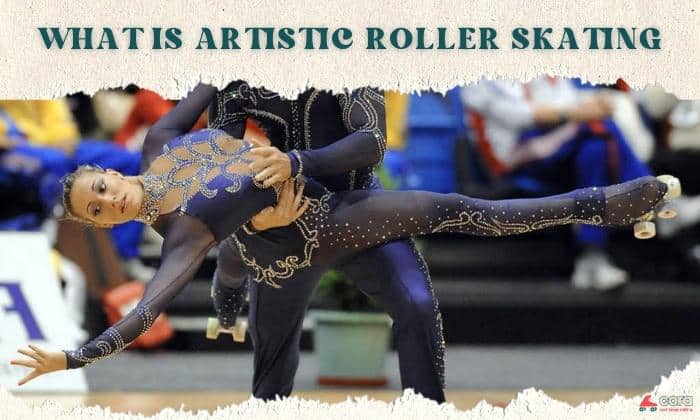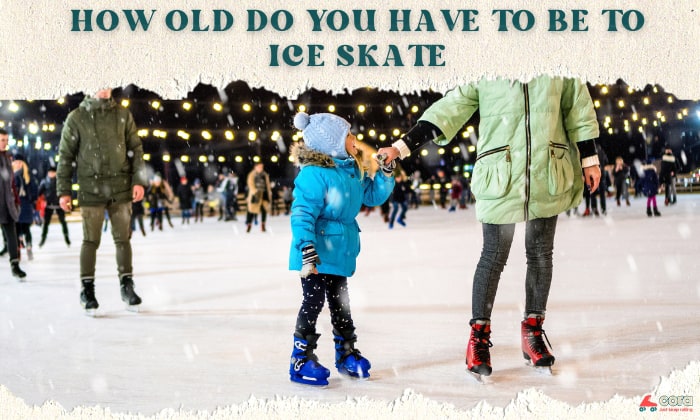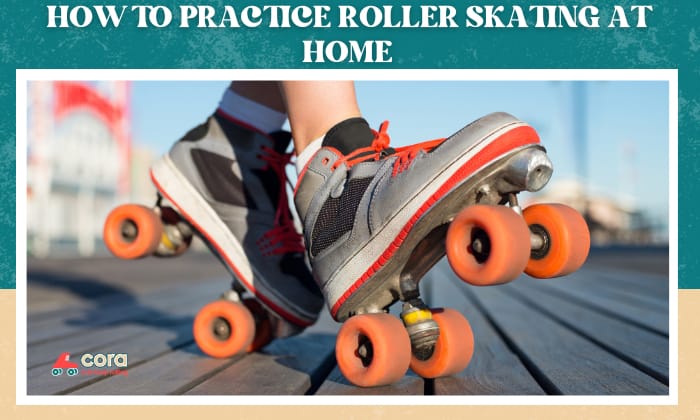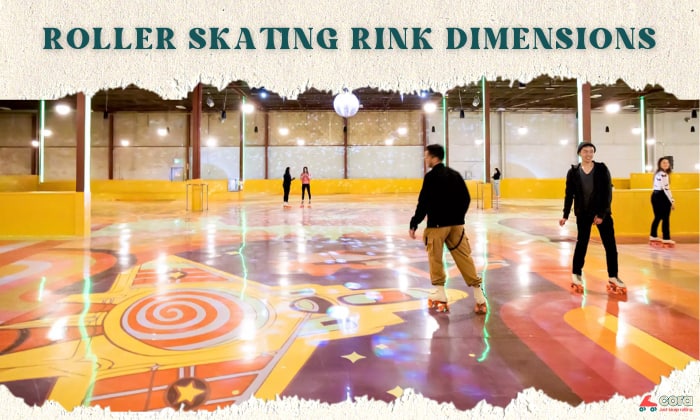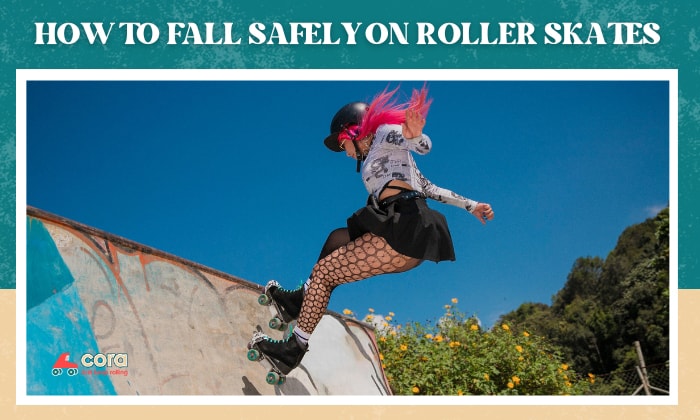Roller skates vs. rollerblades for exercise? Absolutely! While they might just look like fun activities, roller-skating and rollerblading are also incredible forms of exercise. They can be done as aerobic workouts that strengthen the heart, lungs, and muscles
Given the seemingly similar benefits they provide, which one will be a better pick for you? Continue reading to find all the details!
Page Contents
Roller Skates vs. Rollerblades – What Are They
Before getting into details, note that both types of footwear have variations for specific genders and ages. For example, you can find rollerblades for women and roller skates for 7-year-olds.
1. Roller skates
Roller skates, also referred to as quad skates, are the required footwear for roller skating. They have two sets of wheels (four wheels in total) arranged into a box setup and a toe stop (or jam stop) at the tip of the shoes for braking.
Roller skates can also be used for roller derby, artistic skating, jam skating, or rhythm skating. These are all excellent ways to exercise (which we will touch more on later).
2. Rollerblades
On the other hand, rollerblades have a single line of wheels, and there can be three, four, or five wheels. Generally, rollerblades are suitable for speed skating, aggressive skating, and skating for commuting.
Unlike roller skates, rollerblades don’t have top stops. Instead, they feature a heel brake. However, you may find rollerblades that have no built-in brake at all, so you’ll have to learn certain stopping techniques.
Rollerblades vs. Roller Skates For Exercise
You can make both roller-skating and rollerblading a good workout. They are low-impact, cardio activities that can help you exercise. Moreover, they can help you build and strengthen muscles, enhance balance and coordination, improve posture, and work out your lungs.
1. Wheels
As explained above, roller skates have a similar wheel arrangement to a car (two in the front and two in the back). This placement provides more balance, making them ideal for beginners and people who are prone to falling sideways when skating.
In contrast, rollerblades’ single line of wheels makes it harder to keep balance. This is why it’ll take a lot of practice before you can remain stable on rollerblades.
2. What Muscles Work?
As cardio workouts, both roller-skating and rollerblading work muscles in your heart.
Here are some other specific muscles that they put to work.
01 Muscles used in roller skating-
- Leg Muscles: Maintaining balance, pushing off from the surface, alternating weight to facilitate movements, and pulling to a stop during roller-skating all work leg muscles.
- Glutes Muscles: While you roller skate, you flex your hips to push forward and maneuver with twists and turns. This means roller skates workout your glutes, helping to build and strengthen your buttocks.
- Core Muscles: Simple maneuvering with twists and turns work your core muscles. In addition, these muscles are essential for keeping balance, so roller skating on uneven surfaces is a quick way to tone your abdomen.
- Arm Muscles: To stay balanced while roller-skating, you also need to use your arms. This is especially so when doing roller-skating spins and jumps.
-
- Glute Muscles: These are the muscles that make up your buttocks. They are worked when you move your thighs to push off from the surface.
- Quadriceps: These are the muscles in your front thighs. When you bend your hip, you work these muscles.
- Hamstrings: These are in your thighs and under your glutes muscle. When you extend your hips or bend your knees while rollerblading, you activate these muscles.
- Adductors: These are muscles in your inner thighs. Gliding and continuously shifting weight while rollerblading works these muscles.
- Abdominals: These are the muscles from your lower chest to your pelvis. As you skate, these muscles are used to maintain balance and stability. They also help you create a force to propel you forward/backward. The faster and more intense you rollerblade, the more you work these muscles.
3. Stopping
Compared to rollerblades, it’s a lot easier to brake on roller skates because they feature a toe stop. You only need to grind your toe against the ground to come to a halt.
In contrast, most rollerblades have no built-in brakes, and those that do will place the brake on the heel. This means you’ll have to lean slightly backward to stop–an intimidating task for beginners.
However, without the aid of the heel brake on the rollerblades, you’ll have to master the T-stop and hockey-stop techniques, which are both challenging for beginners.
4. Surfaces
The great thing about rollerblades is that their bigger wheels allow them to be suitable for almost any surface, from indoors to outdoors. The same can’t be said about roller skates—their small wheels mean moving on even surfaces indoors is the only option.
5. Amount of Calories Burned
Rollerblading and roller skating body workouts can also help you burn calories and lose weight.
On average, a roller-skater weighing 150 pounds can burn 482 calories every hour skating, and a roller-blader of the same body weight burns roughly 600 calories.
This means that if you roller-skate an hour every day for a week, you will lose about 3,374 calories. If you use inline rollerblades instead, you’ll lose approximately 4,200. That’s an extra 826 calories! Hence, rollerblading weight loss before and after might be more noticeable.
6. Pros & Cons
| Roller Skates | Roller Blades | |
| Pros |
|
|
| Cons |
|
|
Frequently Asked Questions (FAQs)
Is ice skating the same as roller-skating and rollerblading?
No, ice skating is not the same as roller skating and rollerblading. Ice skaters use skates with a single blade, and they move on ice surfaces. This sets them apart from roller skaters and inline skaters.
Is rollerblading a good form of exercise?
The answer is an emphatic yes! Rollerblading is an excellent way to stay fit, as it increases the body’s cardiovascular endurance and strengthens the muscles of the legs, arms, and core.
In addition to providing a great workout, rollerblading is a low-impact exercise that is gentle on the joints. It also offers a number of mental and emotional benefits, including improved focus, increased happiness, and reduced stress levels.
Besides, rollerblading is an enjoyable activity that does not feel like a chore, so it can be easier to maintain than a strenuous exercise routine.
Does inline skating burn more calories than roller skating?
Yes, as mentioned above, inline skating does burn more calories than roller skating, considering the former requires more muscles and skills to stay balanced. However, it’s still important to note that the rate of calories-burning depends on many other factors, such as your sex, age, health status, etc., as well.
For beginners, which is harder: Roller-skating or rollerblading?
Most people, including skaters on Reddit, think rollerblading is more difficult than roller-skating because balancing on a single line of wheels is tougher than on a four-wheel box setup.
However, inline skates provide more ankle support, making them easier to use in this regard. Moreover, quad skates have wide wheels that can stump against small obstacles, making them ill-fitting for the outdoors. So, in this sense, rollerblading might be easier than rollerskating.
Should I roller skate or rollerblade for exercise?
Roller-skating and rollerblading both offer excellent help benefits. They can be enjoyed by people of different ages and fitness levels. Plus, they provide a great way to make new friends while having fun.
Therefore, which one is a better option will depend on how skilled you are. If you’ve never skated before, it’s better to start with roller skates. Once you get a good grip on how to maintain your stability, you can move on to rollerblades.
However, if you’re confident in your ability to remain balanced, feel free to try out rollerblades right away.
Conclusion
Now that you have all the key details to roller skates vs. roller blades for exercise, you can make your pick!
If you’re still wondering, “Is roller skating or rollerblading better exercise?”, I’d say that both are great options. The final choice all boils down to your personal preferences and skills.
Will you be roller-skating or rollerblading this week to work out? Tell us in the comments below!

Harrison is a skating enthusiast who picked up the sport during her student exchange years in Canada. She has been a skating coach for children and teens for 3 years and now holds classes as a freelancer. Harrison entwines her experience leading skating classes in the content published on Cora to help readers fall in love with skating, just like she did.


